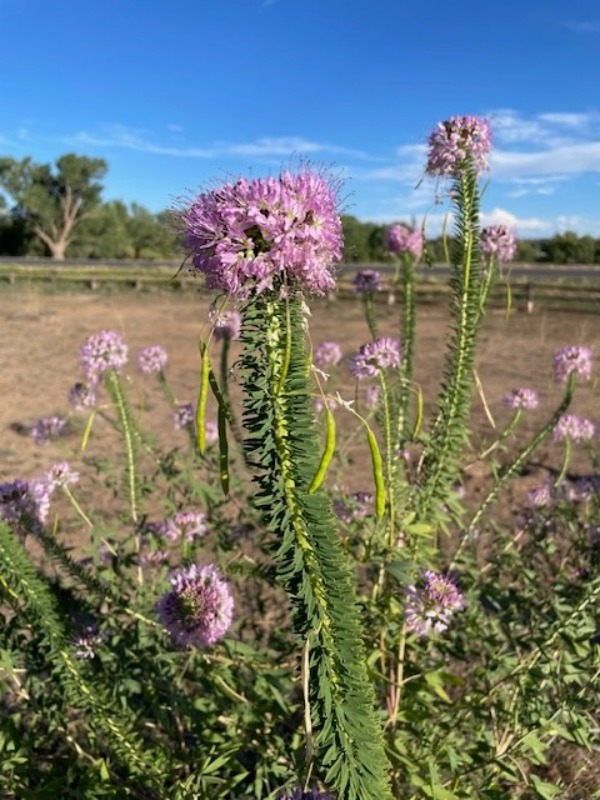Aztec Ruins National Monument, NM
Ethnobotany Series
| ➠ Four-wing Saltbush |
| ➠ Globemallow |
| ➠ Prickly Pear Cactus |
| • Rocky Mountain Bee Plant |
| ➠ Sages |
| ➠ Threeleaf Sumac |
| ➠ Yucca |
| ⇩ Print Hard Copy (PDF 465 KB) |
Rocky Mountain Bee Plant
The Rocky Mountain Bee Plant (Cleome serrulata), sometimes called such diverse names as spiderflower, stinkweed, or Navajo spinach, can be found on roadsides primarily in the Western United States, but it has been found as far east as Minnesota. It grows in dry, barren pastureland, sandy soils, and well-drained open woodlands and mountain foothills to a height of between 2 to 5 feet.The most widespread uses for this plant by indigenous peoples were as a food source and as a source for dyes and paint pigment. The shoots could be gathered, boiled, and eaten as greens, and they were a great source of calcium and Vitamin A. The seeds could be dried and ground up for mush or meal for bread, and the seed pods could also be eaten raw or used as seasoning. A tea could be made to help with fever and stomachaches, and a compress could be made to help soothe sore eyes.
When the leaves are boiled, the result is a liquid that has been used as a yellowish-green dye. When the entire plant is boiled down (including stems and roots), the end product is a thick, black resin that can be used as a paint for pottery. And bees love it!
Where have you seen bee plants growing in abundance?

